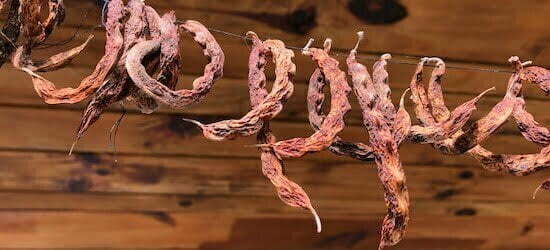Well, we’ve come upon yet another consequence of the pandemic era. Due to a resurgence of interest in homestead skills, there is now a nationwide shortage on canning jars, lids, and rings. If you’re accustomed to buying up all of your favorite end-of-summer produce at farmers tailgate markets to preserve for the next year, you may need to consider alternate methods, like freezing or drying.
If you have excess freezer space, you’re good to go. Freezing is a great way to preserve tomatoes, berries, corn, beans, and more, and is often even preferable to hot water bath canning. (Easier, too.) But if you’ve maxed out freezer space and need an additional appliance to store your market bounty, be warned that chest freezers have also been in limited supply throughout the pandemic.
Drying preservation methods have the added benefit of producing food that takes up less space. You don’t need special equipment. A dehydrator can speed up the process, but if you have an oven or a sunny outdoor spot, you have what you need. Oven drying is a good method for tomatoes, corn, okra, and beets, as well as fruits like peaches, nectarines, figs, apples, or pears. Hanging and air drying works especially well for peppers and beans. We’ll walk you through air drying steps this week. Check back next week for an oven drying primer.
Poblano, jalapeño, and cayenne peppers are are go-to varieties for drying. Poblanos produce anchos. Red jalapeños, when smoked and dried, become chipotles. But you can dry any thin-walled variety, including mild sweet peppers. Thicker-walled peppers won’t dry quickly enough and could develop mold. Peppers in all shapes and degrees of hotness are widely available at markets.
Greasies are the classic drying bean of Appalachia, used to make leather britches. But you can also dry common types like half runners or wax beans. (If you are specifically looking for greasy beans, Lee’s One Fortune Farm has them at several markets.) Snap beans first and remove strings, if present. You can dry beans with or without blanching first. Some cooks find that blanching better preserves texture and color.
Using a long, sharp needle and heavy thread (or unwaxed, unflavored dental wax), string beans or peppers, leaving half an inch in between each. Hang in a dry area with good airflow and sunshine (like your front porch). Depending on the humidity, they’ll be ready in three to four weeks. Peppers should be uniformly dry and slightly brittle. Beans will shrink considerably and will have a leathery texture. Store in airtight containers in a cool, dry place.
In addition to a plethora of late-summer produce, markets also have meats, eggs, bread, cheese, fermented products, baked goods, and beverages. Find more details about farms and markets throughout the region in ASAP’s online Local Food Guide.
Fresh at Farmers Markets This Week

